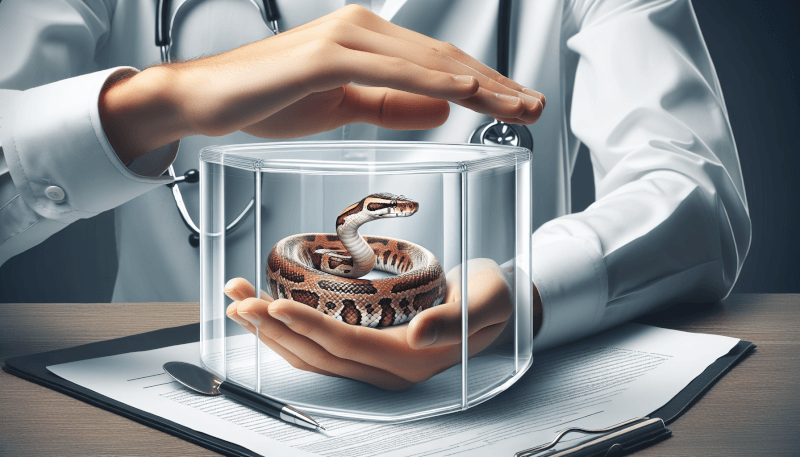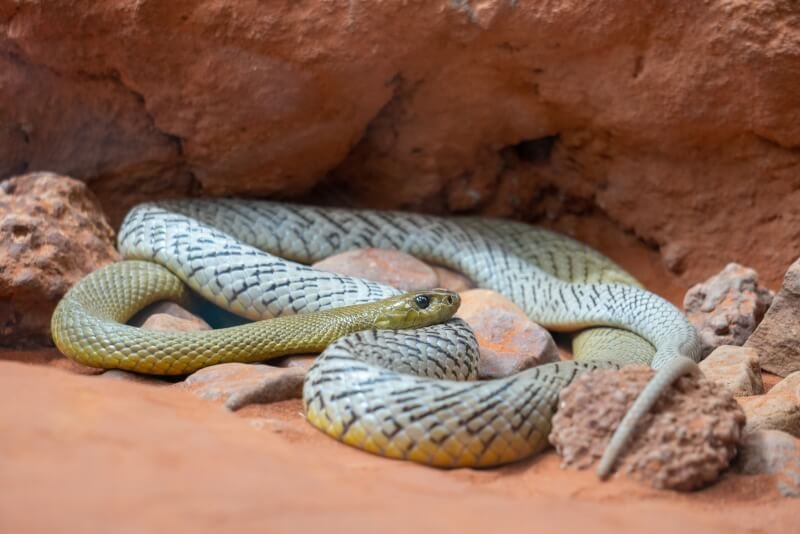Imagine the peace of mind that comes with knowing your beloved pet snake is safe and secure in its habitat. In this article, we will explore the importance of creating a predator-proof environment for pet snakes. By understanding the potential threats they face, we can take proactive steps to ensure their safety and well-being. From implementing strong enclosures to providing ample hiding spots, this guide will equip you with the knowledge and tools needed to create a haven for your slithering friend. Say goodbye to worries and hello to a worry-free life with your pet snake!
Choosing a Secure Enclosure
When it comes to ensuring the safety of your pet snake, choosing a secure enclosure is of utmost importance. A secure enclosure not only prevents your snake from escaping, but it also keeps potential predators at bay. Here are some factors to consider when selecting the right enclosure for your snake.
Selecting the Right Size
One of the primary considerations when choosing an enclosure for your snake is selecting the right size. Snakes need adequate space to move around, stretch, and explore their surroundings. A spacious enclosure also allows for the installation of appropriate hides, climbing branches, and other enrichments. It is essential to choose an enclosure that provides ample space for your snake’s specific species and size.
Opting for an Escape-Proof Design
To prevent your snake from escaping, it is crucial to choose an enclosure with an escape-proof design. Look for enclosures made of sturdy materials that cannot be easily broken or damaged. Securely locking doors or lids are important features to consider. Additionally, ensure that any ventilation holes or openings are properly covered to prevent your snake from squeezing through or pushing them aside.
Using Locks and Latches
Extra security measures, such as locks and latches, can provide an additional layer of protection for your pet snake. These features ensure that the enclosure remains securely closed, preventing any accidental openings or unwanted intrusions. Choose locks and latches that are durable and easy to use, allowing you to access the enclosure easily while keeping your snake safe and secure inside.
Preventing Entry Points
Creating a predator-proof environment for your pet snake also involves securing any potential entry points that may allow predators to enter the enclosure. Here are some essential steps to take to prevent unwanted access.
Securing Doors and Windows
One of the most important steps in preventing entry points is to secure the doors and windows of your snake’s enclosure. Ensure that all entry points have secure locks or latches that cannot be easily tampered with. It is advisable to regularly check the condition of these locks and latches to ensure they remain in good working order.
Sealing Gaps and Cracks
Inspect the enclosure for any gaps or cracks that may serve as potential entry points for predators. Seal off these openings using materials that are sturdy and snake-proof. Pay close attention to corners, edges, and joints, as these are common areas where gaps may occur. By sealing these gaps and cracks, you minimize the chances of unwanted predators gaining access to your snake’s enclosure.
Covering Vents and Openings
Vents and other openings in the enclosure may also pose a danger, as they can provide entry points for smaller predators. Cover these vents and openings securely with mesh or wire that is small enough to prevent any unwanted intrusions, while still allowing for proper airflow. Regularly check these coverings to ensure they remain in good condition and are not damaged or compromised in any way.
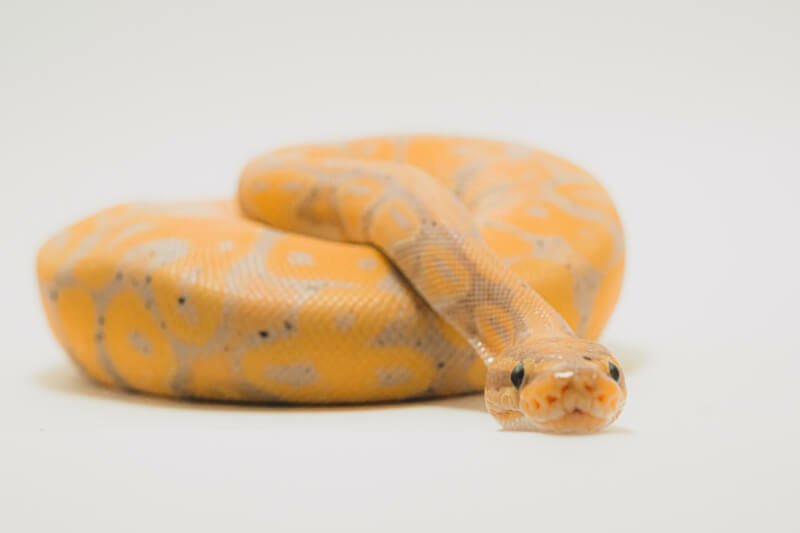
Installing Snake-Proof Fencing
Creating a secure outdoor space for your pet snake is essential to ensure its safety and prevent potential attacks from predators. Snake-proof fencing can provide an effective barrier. Here are some key considerations when installing snake-proof fencing.
Choosing an Appropriate Fencing Material
When selecting snake-proof fencing, opt for materials that are sturdy and cannot be easily penetrated by snakes or other predators. Solid wood, metal, or composite materials are often recommended. Avoid using materials that snakes may be able to climb, such as chain-link fencing, as this can compromise the effectiveness of the barrier.
Ensuring Sufficient Height and Depth
The height and depth of the snake-proof fencing are crucial in preventing snakes from either climbing over or burrowing under the barrier. The recommended height for snake-proof fencing is generally at least twice the length of the longest snake you plan to house. The depth should extend below the ground surface to deter snakes from digging or burrowing their way into the enclosure.
Burying the Bottom Edge
To further reinforce the snake-proof fence, it is advisable to bury the bottom edge of the fencing material. By burying the bottom edge several inches into the ground, you create an additional barrier that discourages snakes from attempting to go under the fence. Be sure to bury it deep enough to prevent snakes from pushing up or burrowing beneath it.
Minimizing Outdoor Dangers
Designing an outdoor space for your pet snake requires careful consideration to minimize potential dangers and ensure the safety of your reptile companion. Here are some crucial steps to take in creating a predator-proof outdoor environment.
Avoiding Toxic Plants
Before setting up your snake’s outdoor enclosure, familiarize yourself with the plants in your yard, as some can be toxic to your pet. Remove any poisonous plants or relocate them away from your snake’s living space. It is essential to research the specific species of plants to ensure they are safe and non-toxic for snakes.
Removing Attracting Wildlife
Predators and other wildlife can pose a significant threat to your pet snake. Take measures to remove any potential attractants or sources of food that may draw these animals to your outdoor space. Properly secure trash cans, remove fallen fruit or bird feeders, and avoid leaving pet food outdoors. By minimizing attractants, you lower the risk of encountering wildlife that may harm your pet snake.
Regularly Inspecting the Yard
Regular inspections of your yard are vital to identify and address any potential hazards that may compromise the safety of your snake’s outdoor enclosure. Look for any damage to fencing, openings in the ground, or other vulnerabilities that could lead to predators gaining access. Regularly inspecting and maintaining the area around the enclosure helps ensure a secure and predator-proof environment for your pet snake.
Ensuring Indoor Safety
While providing a secure outdoor environment is important, it is equally crucial to ensure the safety of your pet snake indoors. Here are some key steps to take to create a predator-proof indoor space for your snake.
Securing Hazardous Items
Indoor environments can sometimes harbor items that may pose a threat to your pet snake’s safety. Take the time to secure any hazardous items, such as cleaning chemicals, sharp objects, or electrical wires, that may be within reach of your snake. Store these items in locked cabinets or areas that are inaccessible to your pet.
Closing Off Inaccessible Areas
To prevent your snake from getting stuck or hiding in areas that may be difficult to reach, close off any inaccessible spaces within your home. Block off areas behind furniture, under appliances, or in wall cavities where your snake could potentially become trapped or injured. By eliminating these inaccessible areas, you provide a safe and secure indoor environment for your pet snake.
Eliminating Gaps in Furniture
Ensure that there are no gaps or openings in your furniture where your snake could potentially become trapped. If you have furniture with reclining features, be sure to close or cover any gaps when not in use. By being mindful of these potential hazards and addressing them, you reduce the risks that could harm your pet snake indoors.
Providing Adequate Lighting
Proper lighting is crucial for the overall well-being of your pet snake. However, it is essential to strike a balance between providing adequate lighting and creating warm and dark hiding spots for your snake’s comfort. Here are some tips to ensure appropriate lighting in your snake’s enclosure.
Using Proper Lighting Equipment
Select lighting equipment that is specifically designed for reptiles to provide the light spectrum necessary for your snake’s well-being. UVB lighting is particularly important, as it aids in vitamin D synthesis and calcium absorption. Consult with a reptile veterinarian or herpetologist to determine the appropriate lighting options for your specific snake species.
Avoiding Excessive Brightness
While snakes do need access to appropriate lighting, it is also crucial to provide areas of shade and darkness for their comfort. Avoid excessively bright lighting that may cause stress or discomfort to your snake. By creating a balance between light and shade, you allow your snake to regulate its own body temperature and feel secure in its enclosure.
Creating Warm and Dark Hiding Spots
Snakes require warm and dark hiding spots to feel secure and reduce stress levels. Provide your snake with a variety of hides throughout its enclosure, ensuring they are appropriately sized and easily accessible. Hides can be made from various materials like wood, plastic, or natural materials like rocks or caves. These hiding spots offer comfort and security to your pet snake, mimicking its natural habitat.
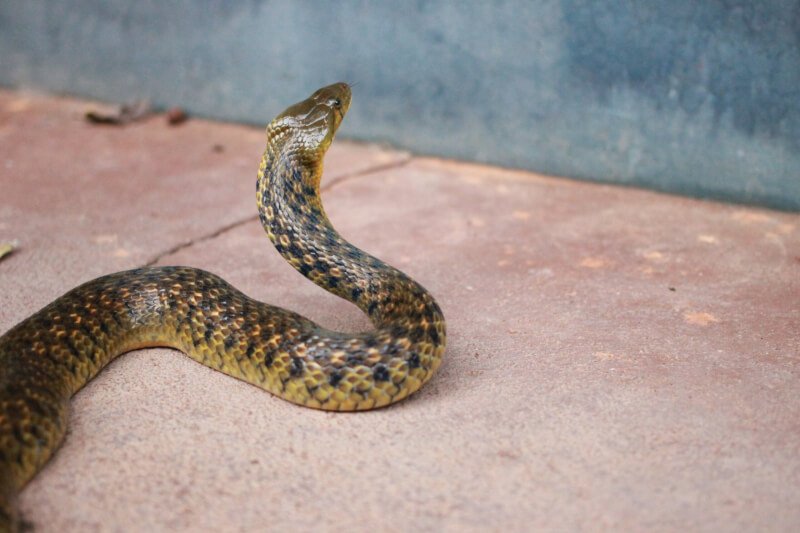
Maintaining Proper Temperature
Maintaining the proper temperature gradient is essential for the health and well-being of your pet snake. Creating thermoregulation zones within the enclosure allows your snake to regulate its body temperature effectively. Here are some steps to ensure proper temperature maintenance.
Using Reliable Heating Sources
To achieve and maintain the desired temperature gradient, it is important to use reliable heating sources. Heat mats, heat lamps, or ceramic heat emitters are common options for providing supplemental heat. Place these heat sources in a way that allows your snake to choose areas that suit its temperature preferences.
Setting Up Thermoregulation Zones
Create thermoregulation zones by providing different temperature gradients within the enclosure. This can be achieved by placing heating sources on one side of the enclosure, creating a warm zone, while leaving the other side cooler. The temperature gradient allows your snake to move between warmer and cooler areas to fulfill its thermoregulation needs.
Monitoring and Adjusting Temperatures
Regularly monitor the temperatures within your snake’s enclosure to ensure they remain within the appropriate range for your snake species. Use thermometers or temperature guns to accurately measure and record temperatures. Adjust the positioning or intensity of heating sources as needed to maintain the desired temperature gradient for your pet snake’s well-being.
Choosing Suitable Substrates
Selecting the right substrate for your pet snake’s enclosure is important for providing a comfortable and secure environment. Consider the following factors when choosing suitable substrates.
Considering Natural and Safe Options
When selecting substrates for your snake’s enclosure, opt for natural and safe materials that mimic its natural habitat. Popular options include aspen bedding, cypress mulch, or reptile carpet. Avoid substrates that could be harmful if ingested, such as pine or cedar shavings, as these can cause respiratory problems for snakes.
Avoiding Toxic or Abrasive Substances
Ensure that the substrate you choose does not contain any toxic or abrasive substances that may harm your pet snake. Some materials, such as certain sands or crushed walnut shell, can be harmful if ingested or cause injuries to your snake’s delicate scales. Research and select substrates that are safe and suitable for your snake species.
Maintaining Proper Substrate Depth
The depth of the substrate plays a role in maintaining a safe and secure environment for your pet snake. A substrate depth of approximately 1-2 inches is generally sufficient for most species, allowing your snake to burrow and hide comfortably. However, some species may require deeper substrate to fulfill their natural behaviors and needs. Research the specific needs of your snake species to determine the appropriate substrate depth.
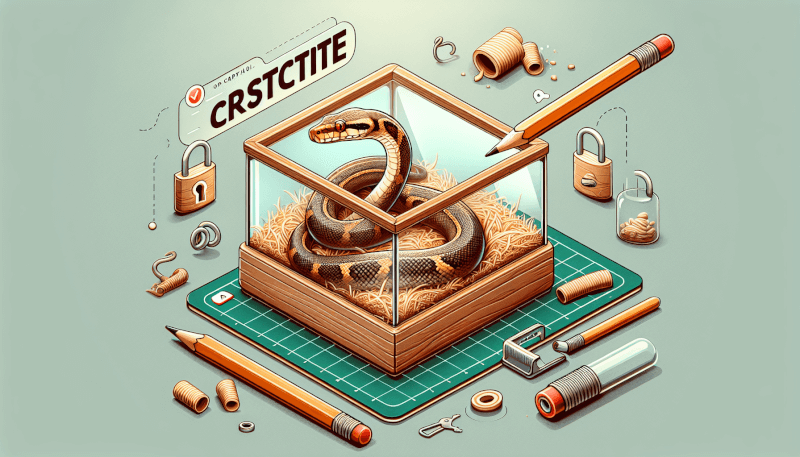
Providing Secure Hide Boxes
Hide boxes are essential for snakes to feel secure and reduce stress levels. Providing multiple hide boxes throughout the enclosure allows your snake to choose the most suitable hiding spot. Consider the following when providing secure hide boxes for your pet snake.
Using Multiple Hide Boxes
To cater to your snake’s natural instincts and need for security, it is important to provide multiple hide boxes within the enclosure. Place hide boxes in different areas, both warm and cool, allowing your snake to choose the most comfortable spot according to its temperature preferences. Multiple hiding options give your snake the freedom to move and adjust its hiding place as necessary.
Ensuring Proper Size and Accessibility
When selecting hide boxes, ensure that they are appropriately sized for your snake. A hide box should be large enough for your snake to comfortably curl up and fit inside. It should also have a secure entrance that allows easy access for your snake while ensuring it feels safe and protected.
Positioning Hide Boxes Appropriately
Strategically position your snake’s hide boxes within the enclosure to ensure optimal safety and comfort. Place them in areas that allow your snake to easily access its preferred temperature gradient or where it can feel hidden from view. By positioning the hide boxes thoughtfully, you create a secure environment that meets your snake’s needs.
Implementing Regular Inspections
Regular inspections of your snake’s enclosure are crucial to maintain a predator-proof environment. By examining the enclosure thoroughly and verifying security measures, you can identify any potential issues or signs of damage. Here are some steps to implement regular inspections.
Examining Enclosures Thoroughly
When conducting regular inspections, carefully examine the entirety of your snake’s enclosure. Check for any damage, such as cracks, gaps, or loose fittings, that may compromise the enclosure’s security. Inspect the integrity of locks, latches, and any other mechanisms used to secure the enclosure. Address any damage or issues promptly to maintain a safe environment for your pet snake.
Checking for Any Signs of Damage
During inspections, be diligent in checking for any signs of damage or wear and tear within the enclosure. Look for chew marks, scratches, or areas that may have been compromised. Investigate any potential signs of attempted entry from predators or other risks that may pose a danger to your pet snake.
Verifying Security Measures
Regular inspections provide an opportunity to verify the effectiveness of the security measures in place. Check that locks, latches, and any other mechanisms are functioning correctly and securely. Ensure that doors, windows, or any other potential entry points remain properly sealed and predator-proof. By regularly verifying security measures, you can maintain a strong defense against potential threats.
In conclusion, creating a predator-proof environment for your pet snake involves implementing various measures to ensure its safety and well-being. By choosing a secure enclosure, preventing entry points, installing snake-proof fencing, minimizing outdoor dangers, ensuring indoor safety, providing adequate lighting, maintaining proper temperature, choosing suitable substrates, providing secure hide boxes, and implementing regular inspections, you can create a secure and nurturing environment for your beloved pet snake. Remember to prioritize the safety and comfort of your snake at all times, and consult with experts or reptile veterinarians for further guidance on maintaining a predator-proof environment.
